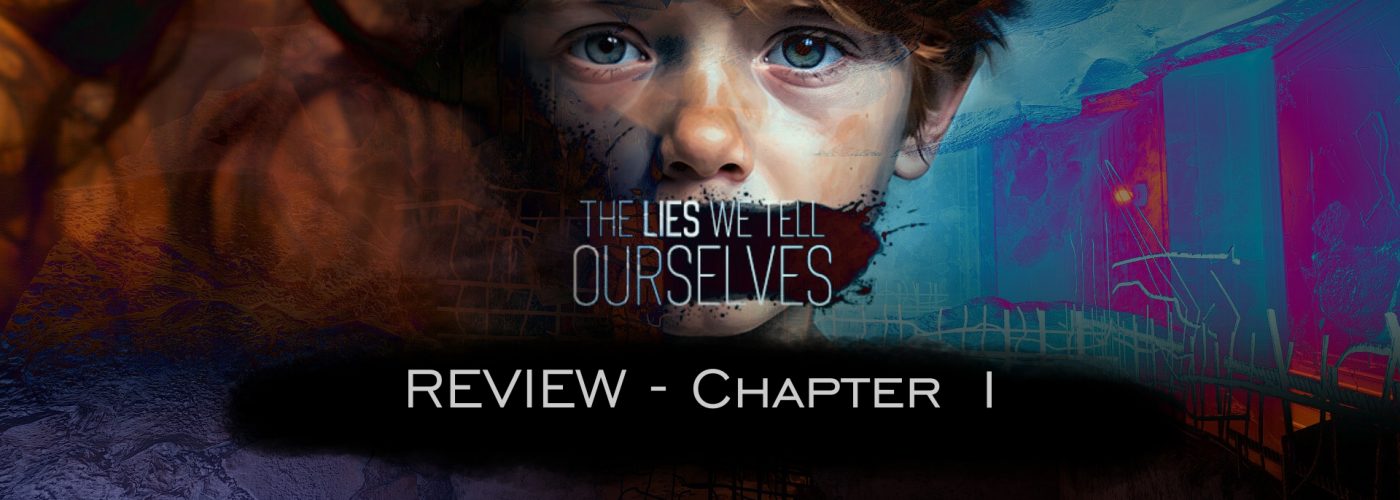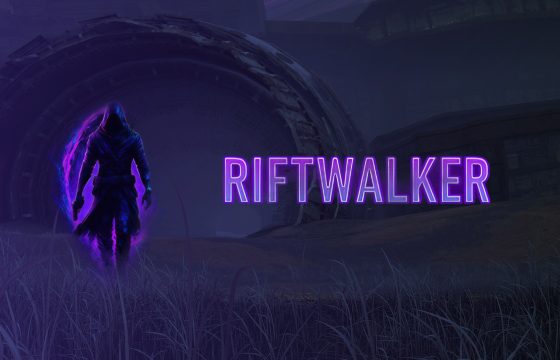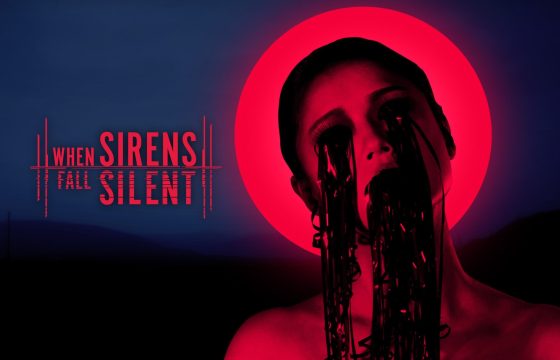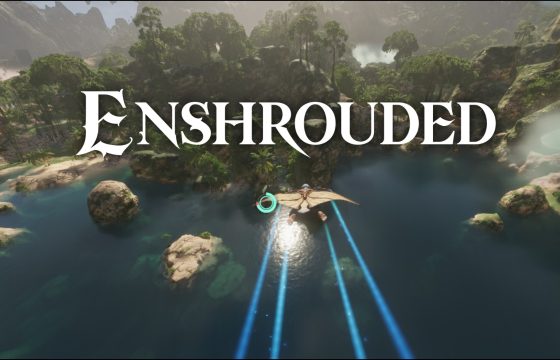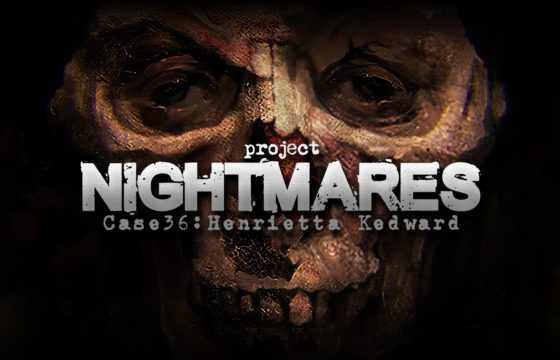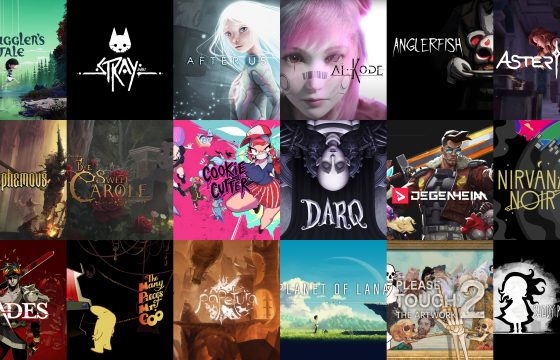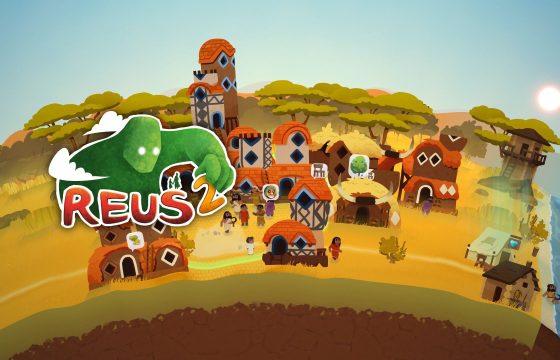The first step into a soul’s labyrinth of symbols, secrets, and family shadows

The Lies We Tell Ourselves stands as a first-person psychological horror game developed by the singularly talented Poopsy, an artist and retired art director whose creative vision imbues this project with both aesthetic sophistication and emotional depth. We previously explored the title at the time of its demo release in 2023 (read here), and conducted an in-depth interview with its creator (read the interview).
Now available on Steam as the first of three chapters, the game draws players into a dark, destabilizing experience -one shaped by cryptic symbols, hidden meanings, and psychological unraveling. Released on January 15, 2025, this opening chapter offers an uncompromising journey through fractured memory and the subconscious, where perception blurs and self-deception reigns.
At the story’s heart lies Vincent, an ostensibly ordinary young man who finds himself trapped in a distorted reality on the night of his twenty-seventh birthday. What begins as a mundane scenario – locked out of his house after a night of drinking – quickly descends into a nightmarish odyssey. Behind every familiar detail hides something uncanny. Every visual cue and narrative beat pulses with dual meaning, shifting between external environment and internal disturbance.
Poopsy draws inspiration from literary and artistic sources such as Dostoevsky’s Crime and Punishment, the unsettling atmosphere of Silent Hill, and the cryptic lyricism of TOOL. The result evokes an introspective experience that meditates on guilt, identity, grief, and mental illness. Through environmental puzzles, stealth-driven sequences, and symbolic architecture, The Lies We Tell Ourselves compels players not only to survive -but to question.
“I don’t make the rules, You do.”
The game opens in a dimly lit room. Vincent, the protagonist, awakens slouched in an armchair, his thoughts murky and disoriented. His first impulse is to ask where he is – but before he can form the question aloud, a distorted voice answers with unsettling clarity:
“It’s not about where, but why.”
So begins the story: with a moment as cryptic as it is profound, the tone is set for an experience rooted in the subconscious, saturated with surrealism, and shaped by the protagonist’s buried traumas. This opening segment, evocatively titled The Weak and the Strong, immediately immerses the player in the central themes of the game – distorted perception, internal conflict, and the blurred frontier between memory and nightmare.

As Vincent tries to orient himself, the walls of the room around him begin to dissolve, melting away into a decaying outdoor space. The interior gives way to a dilapidated playground built alongside a junkyard – a dangerous place, one tied to a childhood injury and a host of painful recollections.
Yet, paradoxically, this very place also marks a formative bond. Here, in the rust and ruin of industrial debris and fractured innocence, Vincent met George – the boy who would become his best friend. They spent countless hours together in this forgotten corner of the world, playing, talking, discovering one another. The juxtaposition of trauma and friendship lingers heavily in the air.
Now, George returns – not in body, but in voice. He speaks from within Vincent’s mind, a presence both comforting and confrontational. As the player advances, George’s interjections oscillate between the nostalgic and the philosophical. He recalls old memories while simultaneously dismantling Vincent’s negative self-perceptions, challenging him to confront the bleak narratives he’s constructed around his past. George becomes the interlocutor of Vincent’s psyche – an unreliable yet essential guide on this descent into memory.

This emotionally jarring introduction abruptly gives way to a moment of false normalcy. We find Vincent stumbling through the night, returning home from a party – his own twenty-seventh birthday. He fumbles with his coat, realizes he’s lost his keys, and decides to slip through a back entrance: an old shack belonging to a neighbor, Mr. Marangi. Beyond its overgrown hedge lies a narrow, hidden passage.
This seemingly mundane scenario, however, offers no reprieve. The thin veil of normality shreds quickly. As Vincent ventures deeper, the landscape of his mind begins to crack open, flooding with fear and paranoia. Thoughts spiral into shadows; past and present blur into a seamless nightmare.
George’s voice echoes once again: “The only way out of this nightmare, is into a worse one.”
A Sacrifice for the Sake of the Sapling
What made Vincent the person he is? Where does the root of his torment lie?
The first chapter – Nature and Culture – unfolds at the moment Vincent steps over the threshold of his home. Yet once again, reality slips away. He finds himself trapped in a dreamlike dimension where he must confront the duality of his nature: one side stinging, the other callous. Together, these halves forge the whole of his identity.
At the heart of this surreal space stands a statue holding a vessel – symbolically, Vincent himself. Inside this container, he must place the emblems of his internal division: a heart and a dagger. When he stabs the heart, a thick, dark liquid floods the vessel, and the ritual concludes. A small tree in the scene transforms into a towering presence, while other elements – such as a double bed – materialize, connecting this space to the next level of his journey and ultimately guiding him “home.”
But is it truly his home? At first glance, the setting resembles a mundane living room. Yet something feels off: too many objects from the past, too many misplaced details. It becomes evident that Vincent remains caught in another phase of his dreamlike odyssey—a pivotal juncture that forces him to revisit his childhood and introduces one of the most defining figures of his life: Margaret Crow, his mother.
This segment of the game makes it clear that Margaret either currently suffers from – or once suffered from – a psychiatric disorder. Sensitive and creative by nature – soon revealed to be an artist – she appears caught in a relentless emotional tug-of-war, prone to erratic and unstable behaviors stemming from deep-seated inner conflict.
When a portrait of young Vincent appears on the wall – painted by Margaret herself – the player finds themselves transported into his childhood bedroom, now littered with toys and memories.
Vincent feared his mother. As he explores this intimate space, one memory in particular rises to the surface. Margaret, convinced her son has taken something from her room, loses control. She violently rips his favorite stuffed toy, Mr. Wiggly – a kind of protective talisman – from his hands and brutally tears its head off.

Vincent sees his younger self, trembling, locked in his room while Margaret knocks at the door – first with deceptive calm, pleading to be let in, then suddenly exploding in rage.
The boy escapes, climbing out the window of his childhood room, and finds himself once again in the dreamlike living room. There, a radio resting on the mantelpiece introduces another pivotal figure: John Arno, his father.
Knock Please
As Vincent exits the illusory “living room” and descends a staircase, the player encounters the next major sequence – a labyrinthine hallway filled with puzzles and symbolic tension.
In this corridor stand two busts – one male, one female – each facing opposite walls, painted red and blue respectively. Embedded in each bust’s chest lies a circular hollow, intended to receive a specific item: a ring. But not just any rings – these are the wedding bands of Margaret and John.
To obtain them, players must solve a pair of particularly challenging puzzles.
The first unfolds within a room that offers a more detailed view of Margaret’s fragmented personality. An artist proud of her child, she carefully preserves Vincent’s childhood drawings – yet remains tormented by forces both internal and external. Her shifting moods form such vivid, conflicting identities that they verge on caricature.
These aspects of her psyche appear here as grotesque masks – disturbing, nearly nightmarish faces that shift expression as tentacles manipulate needles that pierce a brain, displayed atop a pedestal.
As Vincent matures, his understanding of his mother becomes increasingly shaped by her illness. Eventually, that understanding gives way to indifference. At a certain point, he simply stops caring. George, always present in his thoughts, points out how excruciating it must feel not to be able to trust one’s own mother.

By contrast, John Arno initially appears as a serene presence – a creative soul in his own right, a wood sculptor fascinated by world cultures. He teaches Vincent how to navigate using cardinal directions and spends long hours in his tool shed, a place where Vincent once found peace and delight.
There, father and son played together: Vincent searched for wooden coins his father had hidden, using clues scribbled on folded scraps of paper. It was a space of connection and shared curiosity.
But even this bond frays. A defining moment emerges in Vincent’s adolescence, when he tries to craft an axe and John interrupts him mid-process. Harshly, he criticizes his son’s inability to finish anything he starts.
After this, John begins a painful descent. He withdraws from his family and silences himself, consumed by shame and a profound sense of inadequacy.
Eventually, he becomes a distant, unreachable presence – a father marked by strict rules, sudden bursts of anger, and a constant sorrow clouding his gaze.
Red and Blue
The concept of duality, introduced in the game’s prologue, gains sharper definition here. Two sides form a whole. One stings, the other feels nothing. The corridor’s red and blue walls, observed by the busts of Margaret and John, serve as visual metaphors: each parent stares at the color of the other.
Once the player solves the corridor’s central puzzle, both busts shift their gaze in the same direction. This act of symbolic convergence unlocks a passage, leading into the final portion of this first chapter.
The dual-color motif resurfaces in the closing sequence – now as a moment of synthesis. The two forces merge into a singular entity: Vincent. A son, a product, a consequence – now given form in the Spark of Volition. This object grants him a new ability: to focus. With it, he can perceive hidden paths and hear long-buried thoughts – tools essential for navigating both the world and his psyche.
The initial bond between Margaret and John, once symbolized by the busts turned toward one another, begins to disintegrate with the arrival of a third element – Vincent. A child who was meant to become a butterfly but chose to remain a grub.
He stands as the flawed synthesis of two broken souls. And the closing message of this haunting first chapter crystallizes around a devastating truth:
“Families really can make or break a person”.

Conclusions
The Lies We Tell Ourselves defines itself as a psychological horror-thriller – and delivers on that promise with remarkable clarity. A work within this genre demands strong writing above all, and in this case, the narrative quality not only meets expectations but frequently surpasses them.
Though the game’s arresting visuals and refined artistic direction may first capture the eye, its writing ultimately emerges as the deeper triumph. The experience resonates not only for its emotional weight but for its intellectual richness, inviting players to engage with its themes on a personal level.
Not every symbol or reference offers immediate clarity. However, the game avoids plot holes or narrative contradictions. Instead, its wealth of detail enriches the experience for those who wish to explore it thoroughly, without punishing those who merely follow the emotional thread.
Recurring motifs – statues, roots, tentacles, thick black fluid – imbue the world with a sense of mythic weight. These elements do not serve merely as aesthetic flourishes; they anchor a symbolic framework that enhances the game’s psychological impact.
Graphically, the execution speaks for itself. Poopsy’s background as a visual artist radiates through each carefully constructed environment. Yet it’s the interplay between narrative and visual artistry that elevates the entire experience – each supporting and deepening the other.
These two pillars – writing and visual design – compensate for minor technical imperfections. Some players may experience motion sickness, perhaps due to the absence of motion blur, which could improve comfort in future updates.
Gameplay unfolds primarily through exploration and environmental puzzles – never simplistic, often cryptic, and occasionally challenging to the point of mental gymnastics. Certain sequences introduce stealth and combat mechanics, which demand tactical thinking and disrupt the pace just enough to sustain tension.
Special mention deserves the voice acting. Though the cast remains limited, the performances carry genuine emotional weight and nuance.
And yet, as the first chapter concludes, larger questions remain unanswered.
What truly happened to Vincent? What does George mean when he asks: “Why you decided to jump?” Does this refer to a literal act? Or does it symbolize a psychological rupture, a therapy session, perhaps even a hypnotic state?
The truth may remain elusive -but as the voice from the beginning reminds us:
It’s not about the where. It’s about the why.
The Lies We Tell Ourselves on Steam
The Lies We Tell Ourselves
PRO
- Outstanding writing, rich in psychological nuance and layered symbolism
- Striking artistic direction that reinforces the narrative tone
- Puzzles meaningfully woven into the story, often profound and thought-provoking
- Immersive and unsettling atmosphere that evokes authentic emotional responses
- Surprisingly effective voice acting, despite a limited cast
CON
- Some puzzles feel overly cryptic or lack intuitive clarity
- Potential motion sickness due to the absence of motion blur
- Limited gameplay variety in early stages (focused mainly on exploration and puzzles)
- Symbolic references may be challenging to interpret for some players

